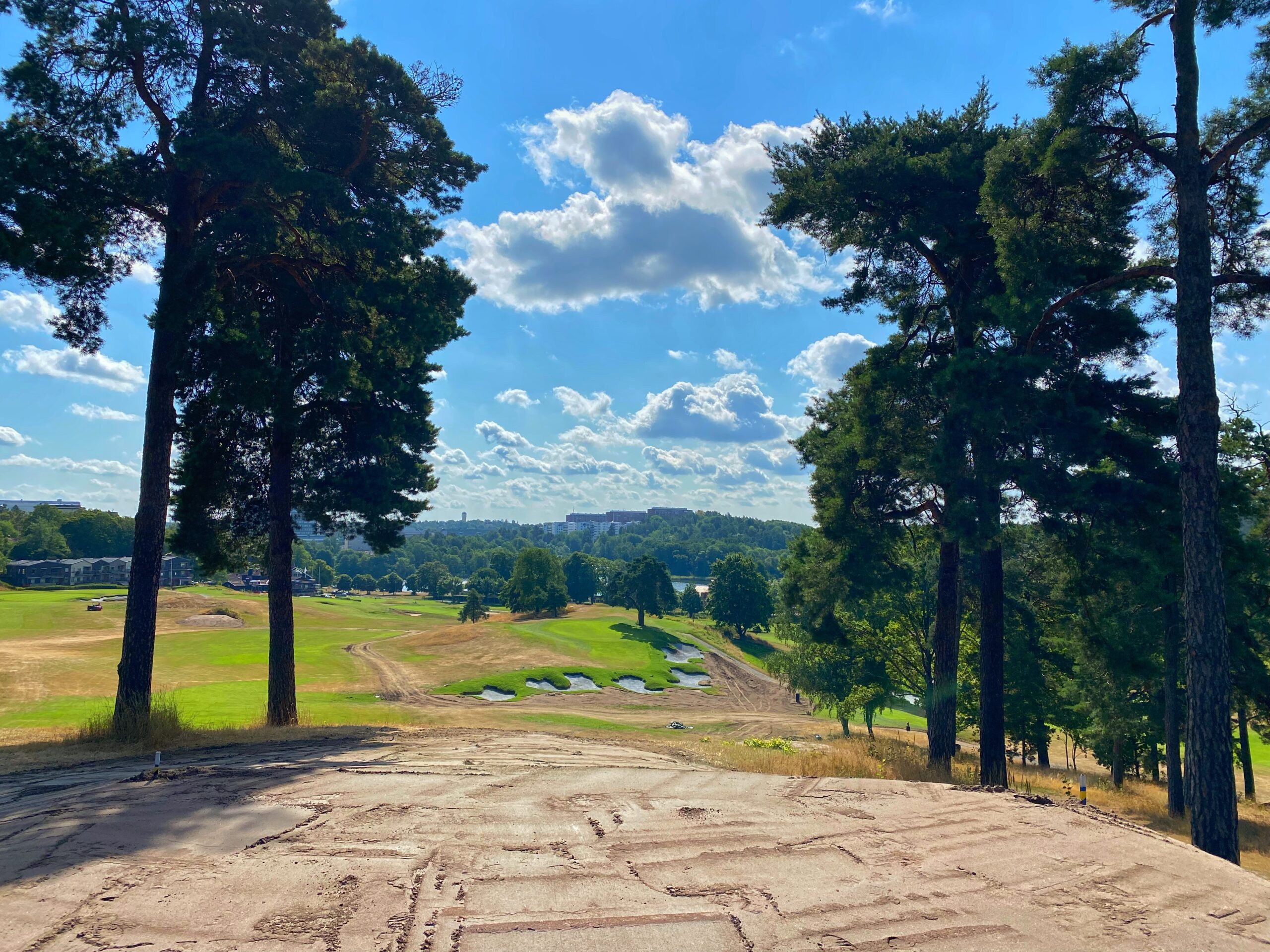Sweden’s, and possibly Scandinavian, golf’s first historic course restoration is currently underway at the Stockholms Golfklubb in the country’s capital city.
The course was originally designed by the great English architect Harry Colt and his partner John Morrison, and was opened in 1932.
After many years of changes, the club has decided to restore Colt and Morrison’s design, and has enlisted golf architect Christian Lundin of (re)Golf to lead the project. And the course’s bunkers, one of the key aspects of the restoration, are being built using the Capillary Bunkers liner product to ensure the best performance and to lock in the new/old look.
“The course has been run down for some years, with irrigation and bunkers that were not up to scratch,” says architect Lundin. “The club did an irrigation and drainage project fifteen years ago, but the members were not happy with the work, as it was not true to the history of the course.”
Stockholms GK therefore resolved, a few years ago, to carry out most course work in-house, but called in Lundin to help resolve a problem caused by a local authority plan to build a major electric cable – to supply Stockholm with power – right across the property. The cable would have disturbed the club’s practice green – though it could have been rebuilt afterwards – but Lundin told the club: “If I am going to touch this course, it needs to be a true restoration.” The message resonated with members, and therefore after extensive discussion and historical research, the project got under way at the beginning of July.

Lundin and the club chose to use Capillary Bunkers to secure the design’s long-term future. “When they built the course I’m certain they built to the best standards they can. The same is true nowadays,” he says. “We’re not trying to restore 1932 maintenance standards. We want to give them a playing experience that matches what they had back then, but with modern standards.” The course’s 92 bunkers will be restored to match early photographs – of which research has revealed a very good bank. “Our process is to look at the old views and I do hand sketches of what we want to replicate,” says the architect.
Head greenkeeper Andreas Wahlberg says that the use of a product like Capillary Bunkers will free up time for his team to focus on preserving the historical aesthetic of the new bunkers. “Over the years, like many older courses, we had lost the shape of the golf course, mostly to make it easier to maintain,” he explains. “The new bunkers will be more consistent and easier to maintain. If I’m not worrying about drainage then I can give more attention to maintaining a complex bunker edge.”
The first phase of the project, involving 40-45 bunkers, will be completed by end July. The course will then reopen for eight weeks, before closing in late September to allow the construction team – including shapers Marcus Terry and Simon Broadley of British contractor 1st Golf Construction – to finish the project. The restored course will then open completely in spring 2022.

